NIFA Funds $3.8 Million Project to Find Climate-Resilient Pistachio Trees
With nearly 520,000 acres planted in California in 2021, pistachios are the fastest growing nut crop in the state. California dominates the pistachio industry, producing 99% of the national harvest and nearly 60% of the global harvest. Photo by Evett Kilmartin
Producers are invited to participate in the study by sharing their experiencesA multi-state team led by Patrick J. Brown has been awarded nearly $3.8 million over the next four years for a project to improve pistachio production as the industry faces harsher winters hot and with scarcer water.
"We are at that unique moment in history where we can do that," said Brown, an associate professor in the plant science department at UC Davis.
The project aims to ensure that the industry can thrive in the decades to come despite the challenges faced. Growers are invited to participate in the study, sharing what they are already trying in their own fields. To discuss the possibilities, contact Brown at pjbrown@ucdavis.edu or (530) 752-4288.
The project includes research to ensure pollination, experiments to calculate irrigation needs in case of water shortage, creation of tools to improve public breeding programs, development of harvesting equipment more efficient and economic analyzes to ensure that future pistachio cultivation is economically rewarding. The researchers hope to offer a guide to growers deciding whether to plant new orchards or remove existing ones.
"The success of California's pistachio industry, which is the world's largest nut producer, has always relied on close collaboration between UC researchers and pistachio growers," said Florent Trouillas , project participant and UC Cooperative Extension Specialist in the Department of Plant Pathology at UC Davis. "Research efforts must continue to address persistent and new challenges, improve sustainability and ensure profitability of pistachio cultivation."
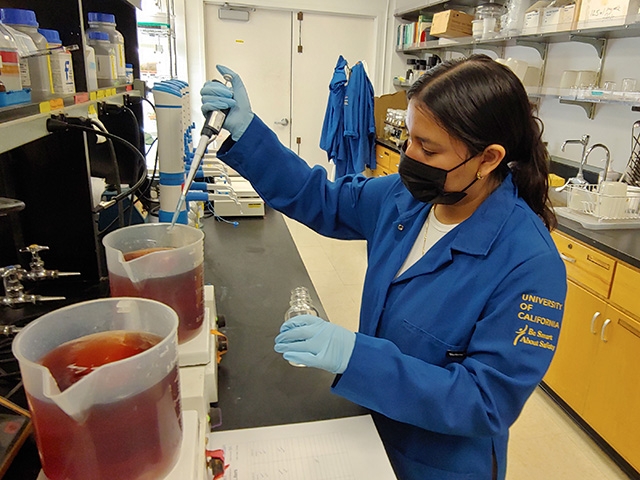
Researchers will look for combinations of pistachio rootstocks and cultivars that have genetic predispositions to tolerate warmer winters, less water, and saltier soil. Photo by Pat J. Brown, UC Davis
The green, flavorful walnuts have become a $5.2 billion industry in California, thanks to their greater tolerance of arid lands and salty soils. The project aims to further improve their climate resilience by finding a rootstock that can thrive despite increasing water scarcity and declining water quality predicted over the next half-century. With millions of genetically distinct pistachio trees growing in the state, "we already have what could be the industry's next big rootstock out there," Brown said. "It's probably already in a grower's field. We just need to find it."
Researchers are looking to pair this new rootstock with high-yielding scions – the productive part of the tree grafted onto the rootstock – to develop new combinations that can thrive in the state's varying conditions .
Problem with "boy meets girl"Pistachios, like many other tree crops, have both male and female trees, and they need hundreds of hours of winter temperatures below 45 degrees Fahrenheit for the trees to flower in the spring. The wind blows pollen from the male flowers to the female flowers, creating nuts.
To complicate the timing: boy flowers and girl flowers generally need different amounts of winter cold to bloom. After a sufficiently cold winter, boys and girls bloom together. But if the winter is warm, most will bloom at different times, reducing pollination.
This happened during the winter of 2014-2015, which saw unusually warm winter temperatures. The following fall, farmers harvested only half their expected harvest, losing more than $1 billion, Brown said. Climate change is expected to cause progressively warmer winters in the future, on average.
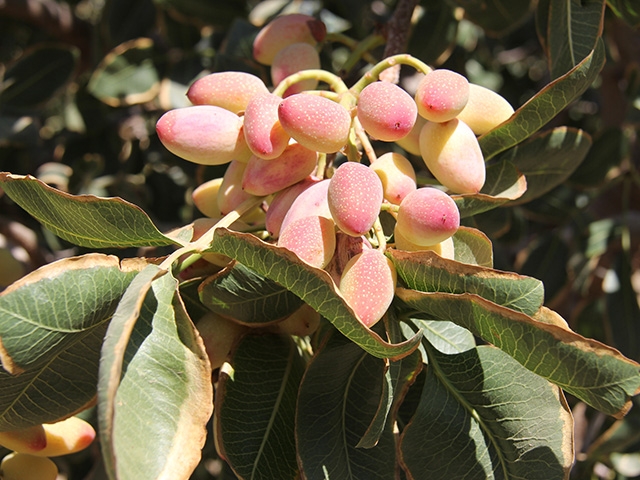
Male flowers and female flowers on pistachio trees usually require...
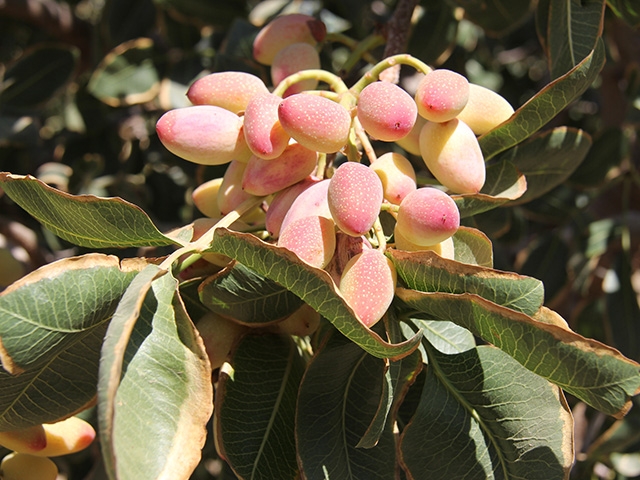
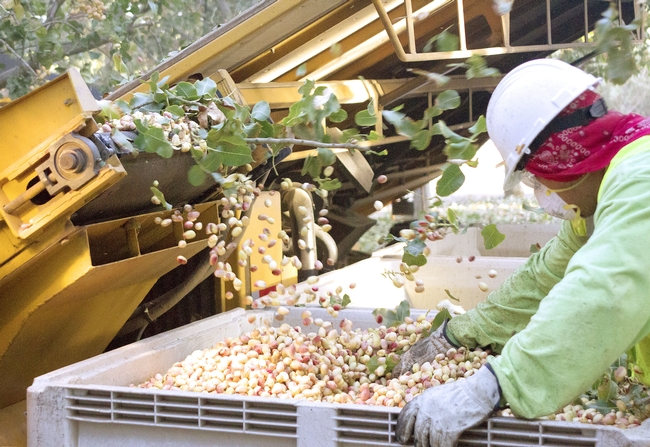
With nearly 520,000 acres planted in California in 2021, pistachios are the fastest growing nut crop in the state. California dominates the pistachio industry, producing 99% of the national harvest and nearly 60% of the global harvest. Photo by Evett Kilmartin
Producers are invited to participate in the study by sharing their experiencesA multi-state team led by Patrick J. Brown has been awarded nearly $3.8 million over the next four years for a project to improve pistachio production as the industry faces harsher winters hot and with scarcer water.
"We are at that unique moment in history where we can do that," said Brown, an associate professor in the plant science department at UC Davis.
The project aims to ensure that the industry can thrive in the decades to come despite the challenges faced. Growers are invited to participate in the study, sharing what they are already trying in their own fields. To discuss the possibilities, contact Brown at pjbrown@ucdavis.edu or (530) 752-4288.
The project includes research to ensure pollination, experiments to calculate irrigation needs in case of water shortage, creation of tools to improve public breeding programs, development of harvesting equipment more efficient and economic analyzes to ensure that future pistachio cultivation is economically rewarding. The researchers hope to offer a guide to growers deciding whether to plant new orchards or remove existing ones.
"The success of California's pistachio industry, which is the world's largest nut producer, has always relied on close collaboration between UC researchers and pistachio growers," said Florent Trouillas , project participant and UC Cooperative Extension Specialist in the Department of Plant Pathology at UC Davis. "Research efforts must continue to address persistent and new challenges, improve sustainability and ensure profitability of pistachio cultivation."

Researchers will look for combinations of pistachio rootstocks and cultivars that have genetic predispositions to tolerate warmer winters, less water, and saltier soil. Photo by Pat J. Brown, UC Davis
The green, flavorful walnuts have become a $5.2 billion industry in California, thanks to their greater tolerance of arid lands and salty soils. The project aims to further improve their climate resilience by finding a rootstock that can thrive despite increasing water scarcity and declining water quality predicted over the next half-century. With millions of genetically distinct pistachio trees growing in the state, "we already have what could be the industry's next big rootstock out there," Brown said. "It's probably already in a grower's field. We just need to find it."
Researchers are looking to pair this new rootstock with high-yielding scions – the productive part of the tree grafted onto the rootstock – to develop new combinations that can thrive in the state's varying conditions .
Problem with "boy meets girl"Pistachios, like many other tree crops, have both male and female trees, and they need hundreds of hours of winter temperatures below 45 degrees Fahrenheit for the trees to flower in the spring. The wind blows pollen from the male flowers to the female flowers, creating nuts.
To complicate the timing: boy flowers and girl flowers generally need different amounts of winter cold to bloom. After a sufficiently cold winter, boys and girls bloom together. But if the winter is warm, most will bloom at different times, reducing pollination.
This happened during the winter of 2014-2015, which saw unusually warm winter temperatures. The following fall, farmers harvested only half their expected harvest, losing more than $1 billion, Brown said. Climate change is expected to cause progressively warmer winters in the future, on average.

Male flowers and female flowers on pistachio trees usually require...
What's Your Reaction?









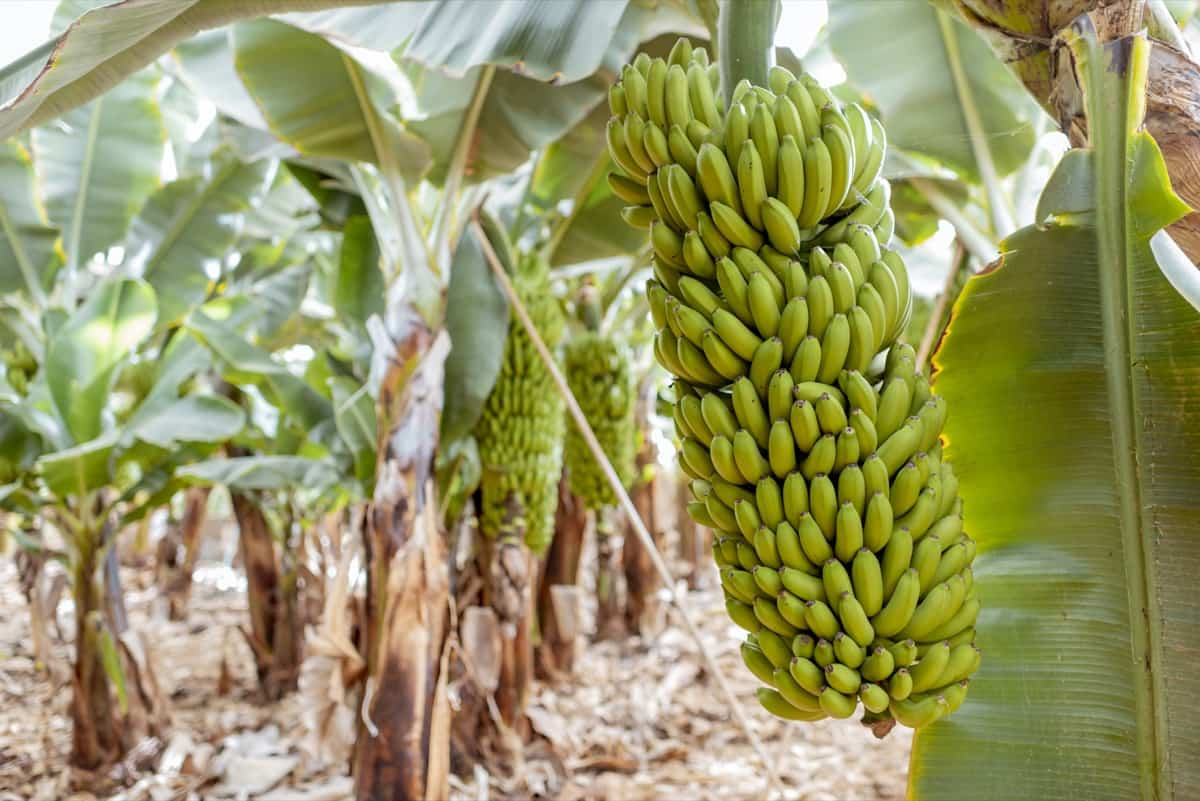



![Three of ID's top PR executives quit ad firm Powerhouse [EXCLUSIVE]](https://variety.com/wp-content/uploads/2023/02/ID-PR-Logo.jpg?#)







